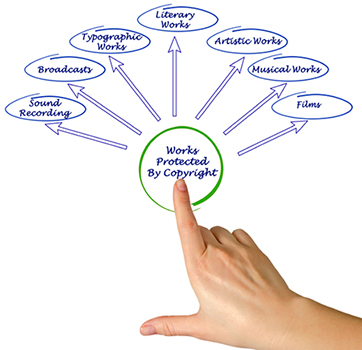Learn
Vocabulary
According to Miriam-Webster, copyright is the exclusive legal right, given to an originator to print, publish, perform, film, or record literary, artistic, or musical material, and to authorize others to do the same for a specific period of time. For an individual, that copyright term is their lifetime plus 70 years. For a company, it is 100 years.
Intellectual property is the area of law that deals with protecting these rights of ownership, which includes copyrights, trademarks, and patents.
Copyrights protect various forms of written and artistic expression such as literary works, musical compositions, sound recordings, broadcasts, and films.
Copyright infringement is the use of copyrighted material without the permission of the copyright holder.
Trademarks protect a name or symbol that identifies the product or brand.
Patents protect those who invent or discover a new and useful process or machine.
Federal law allows reproduction, distribution, or exhibition of portions of copyrighted films, under certain circumstances, without authorization of the owner. This is called Fair Use and is allowed for purposes of criticism, news reporting, teaching, and parody.
Parody is literary or musical work in the style of an author/musician and imitated for comic effect. For example, a YouTuber may act out a movie scene or sing a funny version of a popular song without permission from the copyright holder.
Public domain covers those creative works that are not copyrighted and free to use without permission. Copyright term limits the time a work may be protected before it falls under public domain. You must be very careful to follow intellectual property laws to avoid plagiarism, which is the act of using someone's creative work and passing it off as your own. Plagiarism and source citation are discussed later.
